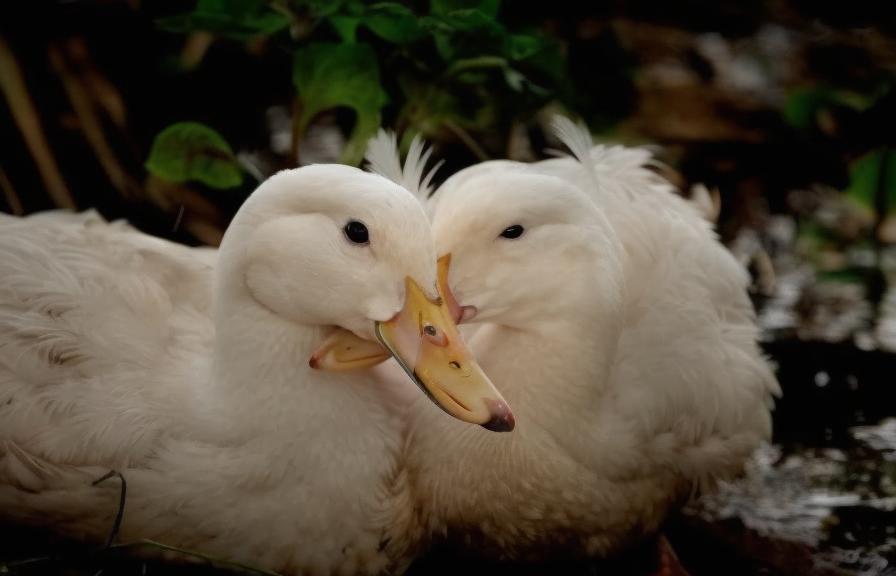Ducks come in a wide variety of breeds, each with its own unique characteristics and traits. Some popular duck breeds include the Pekin, Mallard, Rouen, and Khaki Campbell. Each breed has its own distinct size, coloration, and behavior. For example, Pekin ducks are known for their large size and white feathers, while Mallards are smaller and have a distinctive green head. Understanding the differences between duck breeds is important when considering keeping them together, as it can impact their compatibility and overall well-being.
Duck breeds also vary in terms of their egg-laying capabilities and foraging behavior. For example, Khaki Campbell ducks are known for their prolific egg-laying, making them a popular choice for those interested in duck farming. On the other hand, Muscovy ducks are known for their strong foraging instincts and ability to thrive in free-range environments. By understanding the unique characteristics of different duck breeds, you can make informed decisions about which breeds are best suited for your specific needs and environment.
Key Takeaways
- Understanding the characteristics and behaviors of different duck breeds is essential for successful cohabitation
- Factors such as size, temperament, and purpose should be considered when keeping different duck breeds together
- Introducing new duck breeds should be done gradually and in a controlled environment to minimize stress and aggression
- Proper management of living space, including providing adequate food, water, and shelter, is crucial for maintaining harmony among different duck breeds
- Potential challenges of keeping different duck breeds together include aggression, competition for resources, and potential disease transmission
Factors to Consider When Keeping Different Duck Breeds Together
When considering keeping different duck breeds together, there are several important factors to take into account. One of the most important considerations is the size and temperament of the different breeds. Some duck breeds are more aggressive or dominant than others, which can lead to conflicts and stress within the flock. It’s important to research the specific temperament of each breed and consider how they may interact with one another before introducing them.
Another factor to consider is the space and housing requirements for each breed. Some duck breeds require more space to roam and forage, while others may be content in a smaller area. Additionally, certain breeds may have specific housing needs, such as access to water for swimming or nesting areas for egg-laying. By understanding the unique requirements of each breed, you can ensure that they are provided with a suitable living environment.
Introducing Different Duck Breeds
Introducing different duck breeds to one another should be done gradually and with careful observation. It’s important to monitor the initial interactions between the ducks to ensure that they are getting along and not exhibiting any aggressive behavior. One method for introducing new ducks is to keep them separated by a barrier, such as a fence or wire mesh, so that they can see and interact with one another without being able to physically harm one another.
Another important consideration when introducing different duck breeds is to provide ample food and water sources to prevent competition and aggression. Ducks can be territorial when it comes to food and water, so it’s important to provide multiple feeding and watering stations to prevent conflicts. Additionally, providing plenty of space for the ducks to roam and forage can help reduce stress and aggression during the introduction process.
Managing Different Duck Breeds in the Same Living Space
Managing different duck breeds in the same living space requires careful observation and attention to their individual needs. It’s important to provide adequate space for each breed to roam and forage, as well as access to suitable nesting areas for egg-laying. Additionally, providing multiple feeding and watering stations can help prevent competition and aggression among the different breeds.
Another important aspect of managing different duck breeds in the same living space is to monitor their behavior and interactions on a regular basis. This can help identify any potential conflicts or issues that may arise, allowing you to take proactive measures to address them. Additionally, providing enrichment activities, such as floating toys or access to natural water sources, can help keep the ducks stimulated and reduce stress within the flock.
Potential Challenges of Keeping Different Duck Breeds Together
While there are many benefits to keeping different duck breeds together, there are also potential challenges that should be considered. One challenge is the potential for aggression or dominance within the flock, especially if certain breeds are more aggressive or territorial than others. This can lead to stress and conflict within the flock, impacting their overall well-being.
Another potential challenge of keeping different duck breeds together is the risk of disease transmission. Different duck breeds may have varying levels of resistance to certain diseases, so it’s important to monitor their health closely and take proactive measures to prevent the spread of illness within the flock. Additionally, providing regular veterinary care and vaccinations can help reduce the risk of disease transmission among different duck breeds.
Benefits of Keeping Different Duck Breeds Together

Despite the potential challenges, there are many benefits to keeping different duck breeds together. One benefit is the opportunity to observe and appreciate the unique characteristics and behaviors of each breed. By keeping different duck breeds together, you can gain a greater understanding of their individual traits and personalities, enriching your overall experience as a duck owner.
Another benefit of keeping different duck breeds together is the potential for increased egg production and genetic diversity within the flock. By introducing different breeds with varying egg-laying capabilities, you can potentially increase the overall egg production of your flock. Additionally, maintaining genetic diversity within the flock can help improve their overall resilience and adaptability to changing environmental conditions.
Creating a Harmonious Environment for Different Duck Breeds
In conclusion, keeping different duck breeds together can be a rewarding experience that requires careful consideration and management. By understanding the unique characteristics of each breed and taking proactive measures to address potential challenges, you can create a harmonious environment for different duck breeds to thrive. Providing adequate space, monitoring their behavior, and addressing their individual needs can help ensure that they live together peacefully and enjoy a high quality of life. With proper care and attention, keeping different duck breeds together can be a fulfilling and enriching experience for both the ducks and their owners alike.
If you’re considering keeping different duck breeds together, it’s important to understand their compatibility and potential challenges. According to a recent article on PoultryWizard, “How to Choose the Right Duck Breeds for Your Flock,” certain breeds may be more territorial or aggressive, while others are known for their docile nature. Understanding the dynamics between different duck breeds can help you create a harmonious living environment for your flock. For more insights on creating a harmonious coop environment, check out this article on large chicken coop ideas from PoultryWizard.
FAQs
Can different duck breeds live together?
Yes, different duck breeds can live together peacefully as long as they are introduced to each other at a young age and have enough space to roam and forage.
What should I consider when keeping different duck breeds together?
When keeping different duck breeds together, it’s important to consider their size, temperament, and the availability of resources such as food, water, and shelter. Providing enough space and resources can help minimize potential conflicts.
Do different duck breeds have different housing requirements?
Different duck breeds may have slightly different housing requirements based on their size and behavior. However, in general, they all require shelter from the elements, protection from predators, and access to clean water for swimming and drinking.
Are there any potential issues when keeping different duck breeds together?
Potential issues when keeping different duck breeds together include aggression, competition for resources, and the spread of diseases. It’s important to monitor the ducks’ behavior and health regularly to address any issues that may arise.
What are some popular duck breeds that can live together?
Popular duck breeds that can live together include the Pekin, Khaki Campbell, Rouen, and Indian Runner. These breeds are known for their docile nature and ability to coexist with other duck breeds.
Meet Walter, the feathered-friend fanatic of Florida! Nestled in the sunshine state, Walter struts through life with his feathered companions, clucking his way to happiness. With a coop that’s fancier than a five-star hotel, he’s the Don Juan of the chicken world. When he’s not teaching his hens to do the cha-cha, you’ll find him in a heated debate with his prized rooster, Sir Clucks-a-Lot. Walter’s poultry passion is no yolk; he’s the sunny-side-up guy you never knew you needed in your flock of friends!







